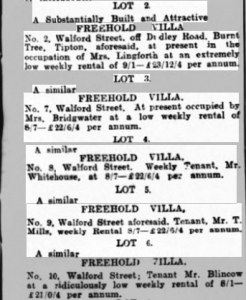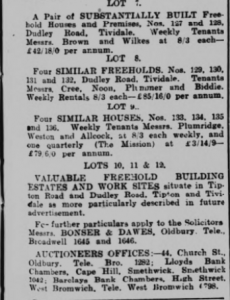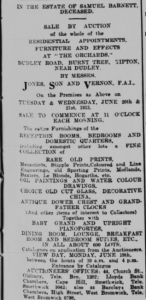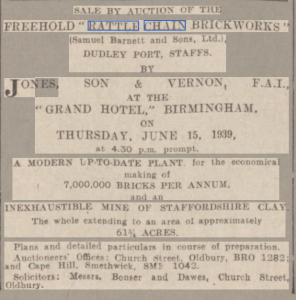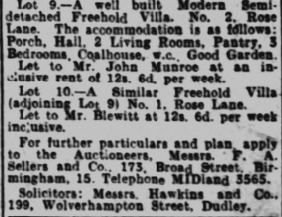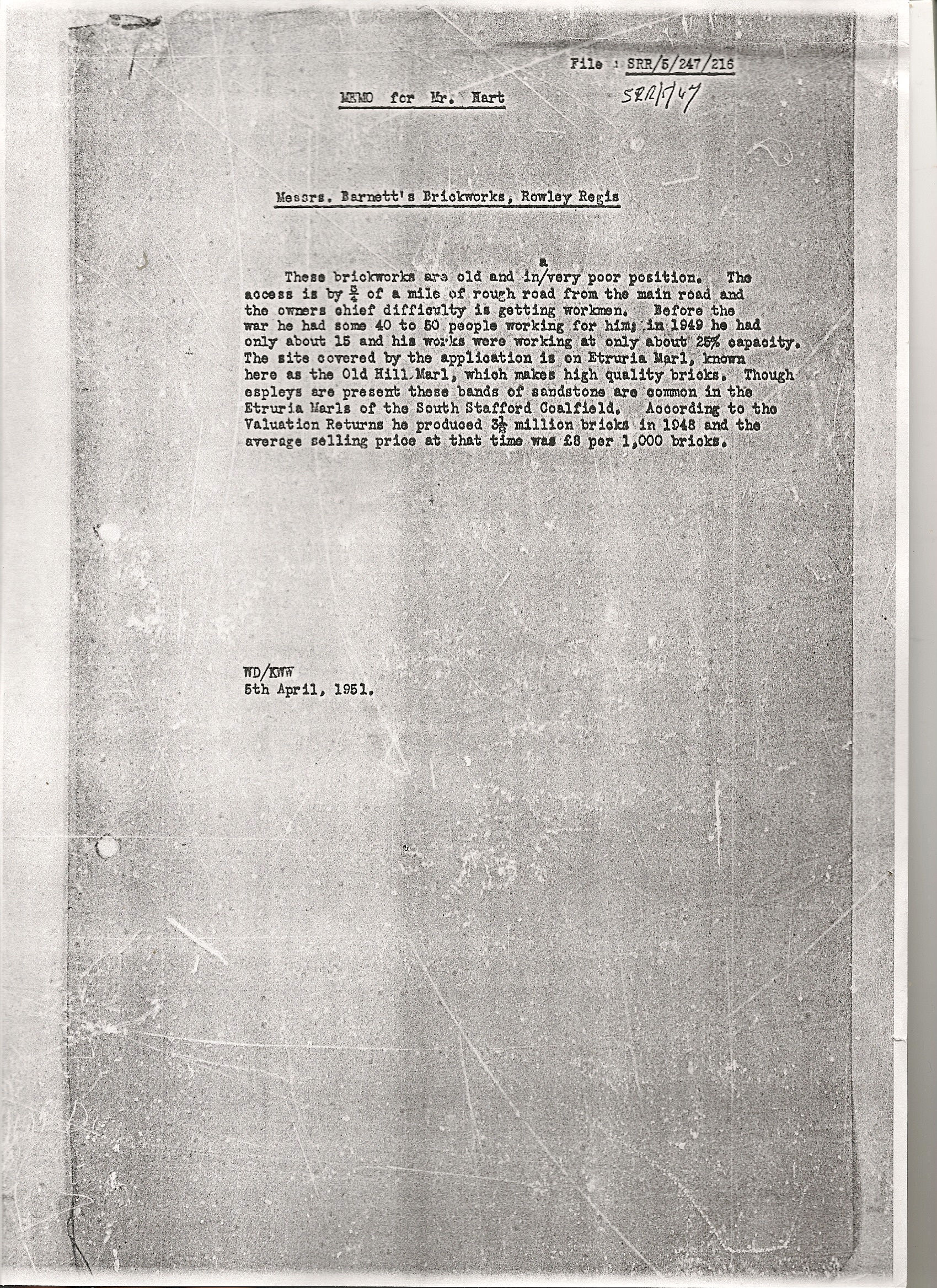
The Rattlechain brickworks c1950, and by now the associated former clay pit was being filled with the toxic waste of Albright and Wilson
There is a some detailed information publicly available concerning The Rattlechain Brickworks in the Samuel Barnett era- principally in connection with the 1899 canal breach and subsequent blame game as to how it had happened.
I put forward another lost gem in the form of this post concerning the state of play with the Barnett family in 1911 and also the connected Stour Valley brickworks further down the canal.
After the death of the main protagonist, it is clear that his sons took over the business, perhaps under the guidance of the consigliere Frank Dawes. There are some fading lights which guide how the business was operating towards the 1930’s and towards the Second World War.
A worker had a serious accident in 1927, and had won compensation from the firm three years later.
The estate of the man in question appears to have been put up for sale around 1933 with several advertisements concerning the considerable property he held, though I am not sure why his heirs would have been selling it all off. Perhaps there were serious failures at the brickworks at this time in the depression era, and the Barnett’s needed some loot pretty fast. The 25th May 1933 Dudley Chronicle shows several house lots for sale by auction, including The Orchards in Dudley Road.
I’m staggered at the amount of property that this private landlord had amassed.
Even the family heirlooms appear to be on offer. Is nothing sacred! I would have loved to have got my hands on one of his piano fortes. 😆
Whatever happened from all this, the brickworks appear to have struggled on. From records from 1938, it is possible to see that it was an industrial smoke nuisance on the radar of the local board of health in Rowley Regis, (as well as the Brades works), in a report- what a great legacy the Barnett family gave to the area, where of course when councillors, they could have written off such complaints.
What is not clear to me however as yet is how the Barnett family ceased connection with Rattlechain, and the conman Sydney Sheldon acquired the plant and more importantly, the surrounding land, which he had absolutely no intention of using for brickmaking.
This post looks at available news sources that I have found before, with new material concerning the advertised sale of the works at different times, and what was being sold in addition to the brick manufacture apparatus. It is clear that this estate was considerable.
The first apparent end of the Barnett era appears to have occurred at the eve of WW2 , and adverts appeared in The Birmingham Daily Post around 1939 such as the one below from 13th May.
This concerned the sale of “a modern and up to date plant” for the production of 7 million bricks per annum. This figure compares with the 40,000 per day cited in the 1911 article concerning the works. It is claimed that there is an “inexhaustible mine of Staffordshire clay” within the 61.5 acres of land. Interestingly, the name of Dawes appears in the solicitors dealing with the matter, with the auction taking place at The Grand Hotel in Birmingham on 15th June 1939. One can only speculate as to why if it was “inexhaustible”, that the Barnett family were apparently letting it go after so long. Were they in debt, or no longer interested in the trade?
A further BDP post of 17th June, confirms that the freehold of the land had been purchased at this auction for £14,000, but not who to.
Subsequent to this , another Daily Post article of 18th October 1940 mentions that a private company had been registered as “Barnett’s brickworks” , with the head office being at Rattlechain. 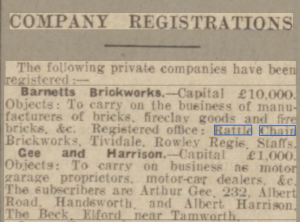
I do not know who exactly was in control of the works at this time, but a subsequent planning record statement suggests that by 1948 the brickworks were struggling. This should however be taken with a large pinch of salt given that it is the conman Sheldon making the claim. It is also stated that work on the new pit started in 1946, (this would become much later the contentious “Duport’s Tip”, and it is likely that far less bricks were made from this marl after this time.

The area of Barnett’s brickworks comprising around 62 acres, as matching the sale description is shown in this post war interim development order.
The picture of the works below was taken in 1948 as part of the Conurbation book.
More importantly, the brickworks and surrounding lands were up for sale once again in this year as revealed in the 10th April 1948 Birmingham Daily Gazette.
The area here is massive at 45,100 acres, and included other factory areas, as well as the three Rose lane cottages, which were occupied on a lease basis.
An overhead picture of Rose Lane and the brickworks from around this period shows the extent of what was being sold, and complements the description in the auction. An overhead shot from the same year also shows the extent of the mainly agricultural land, with Rattlechain brickworks marked at 4.

Panoramic view from 1950 showing Rose Lane marked in red. To the left The Rattlechain brickworks and Rattlechain lagoon, the Tividale sewage works, and bottom left, The Vono Lagoon.
Detailed information is given about the state of the works, and an inventory, which now produced an alleged 100,000 bricks per week. The claim that 7 million bricks per year could be produced is again made.
It is not apparent as to whether this auction sold off every lot, particularly the brickworks themselves. Sydney Sheldon’s involvement with the works appears to start before the Second World War, yet by 1950 he is listed as “managing director” with the application to extend the works in his signature. The description given here however is much different to the flannel being spouted in this auction, and one has to wonder what con artistry was beginning to emerge here.
“These brickworks are old and in very poor position. Before the war he had 40 to 50 people working for him, in 1949 he had only about 15, and his works were working at only about 25% capacity.”
Furthermore “According to the valuation returns he produced 3.5 million bricks in 1948 and the average selling price was £8 per 1000 bricks.”
I have outlined what happened next in the Sheldon Empire HERE, and the loss of the once agricultural land around Rose Lane HERE, and it is clear that brickmaking was never really the intention of this man, and “building” bricks it seems would encompass the tipping of building rubble and God knows what else across the whole site.
By 1973, the reckless fly tippers of Duport Properties Limited would register freehold interest in the brickworks and 2.5 acres on the south side of the works. The fate of this site had been sealed.


